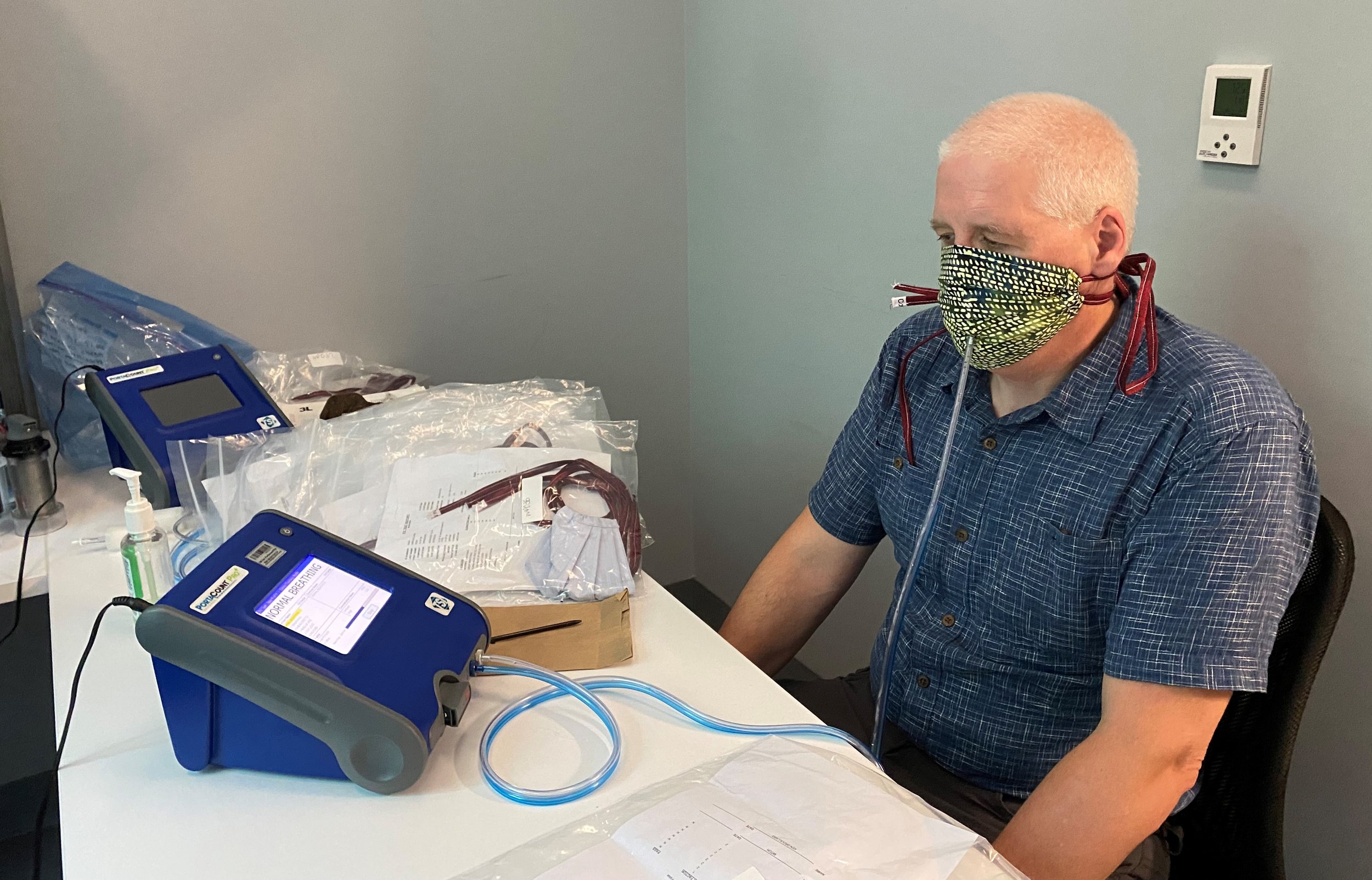Cotton Fabrics for Community Masks
This is a plain-language summary of our peer-reviewed research
Testing 2-ply cotton masks at the De Lannoy lab at McMaster University
Fitted filtration efficiency and breathability of 2-ply cotton masks: identification of cotton consumer categories acceptable for home-made cloth mask construction
We made 2-ply cotton masks to a standard pleated design with overhead ties, using 16 different cotton materials, selected from 9 readily identified consumer categories (bandana, T-shirt, fashion fabric, mass-market quilting cotton, home décor fabric, tea towel fabric, bed sheet fabric, high-quality quilting cotton, and batiks). We tested them, on a single wearer, for their filtration of small particles (in the 0.02 to 1 µm range). We also tested the breathability of the same 2-ply cotton fabrics. As a control, we used a medical mask, certified as level 1 according to the F2100/2299 standards of ASTM International worn using integrated ear loops.
We found that the cotton masks filtered 40 - 66% of particles, compared with a control medical mask which filtered 55% of particles. Masks made from bandana material performed less well than the medical masks at 40 - 48%. The other materials produced masks that were comparable with medical masks. It was difficult to make a mask from one of the tea-towel fabrics because of its thickness. In two layers, most of the materials were breathable according to the standards used for medical masks. Breathability was variable, and sometimes low, for batiks and for bedsheet fabric.
Cotton fabrics from 6 of the 9 consumer categories can produce 2-ply cloth masks with adequate breathability and FFEs equivalent to a medical mask:
Of these, the fabrics with the most consistency for filtration (55 - 66%) and breathability were:
· Mass-market quilting cotton
· High-quality quilting cotton
· Fashion fabric
· T-shirt fabric
· Home décor fabric
· Bedsheet fabric
Figure showing the particle filtration efficiency as a fitted mask (top) and breathability of the flat material (bottom). Top panel: higher values represent better filtration; dotted lines represent particle filtration efficiency of a level 1 certified medical mask. Bottom panel: higher values represent worse breathability; dotted lines represent the thresholds used in standards for level 1 to 3 medical masks.
We also used a mask brace, which seals the edge of the mask to the wearer’s face, to show that the loss of filtration for the medical mask occurred because of edge leak. Using the mask brace on the cloth mask didn’t improve the performance greatly. The mask brace sub-study uncovered why cloth masks achieved similar performance to the medical mask. Medical masks contain superior materials with high particle filtration efficiency rated to 95% filtration efficiency for bacteria and virus sized particles. However, the poor fit of medical masks when worn with integrated ear loops results in 40 - 50% leakage across the mask edges. In contrast, the selected 2-ply cotton mask when worn with fabric ties showed minimal leakage (<5%). Even though the cotton material filtration efficiency is lower then materials used in certified medical masks, the superior fit and low leakage leads to performance equivalent to, and in some cases, exceeding that of the tested medical mask.
The work was limited by the filtration testing being done on a single wearer. It is also a study of particle filtration in terms of protection of the wearer. We didn’t study higher breathing rates or exercise. We didn’t study how well the mask prevents particles from the wearer reaching the environment (source control). All the cloth masks were tested using over-head ties, which may provide better fit than ear loops. We studied only one design of mask. We didn’t study 3-layer masks or masks that have a middle layer of polypropylene.

